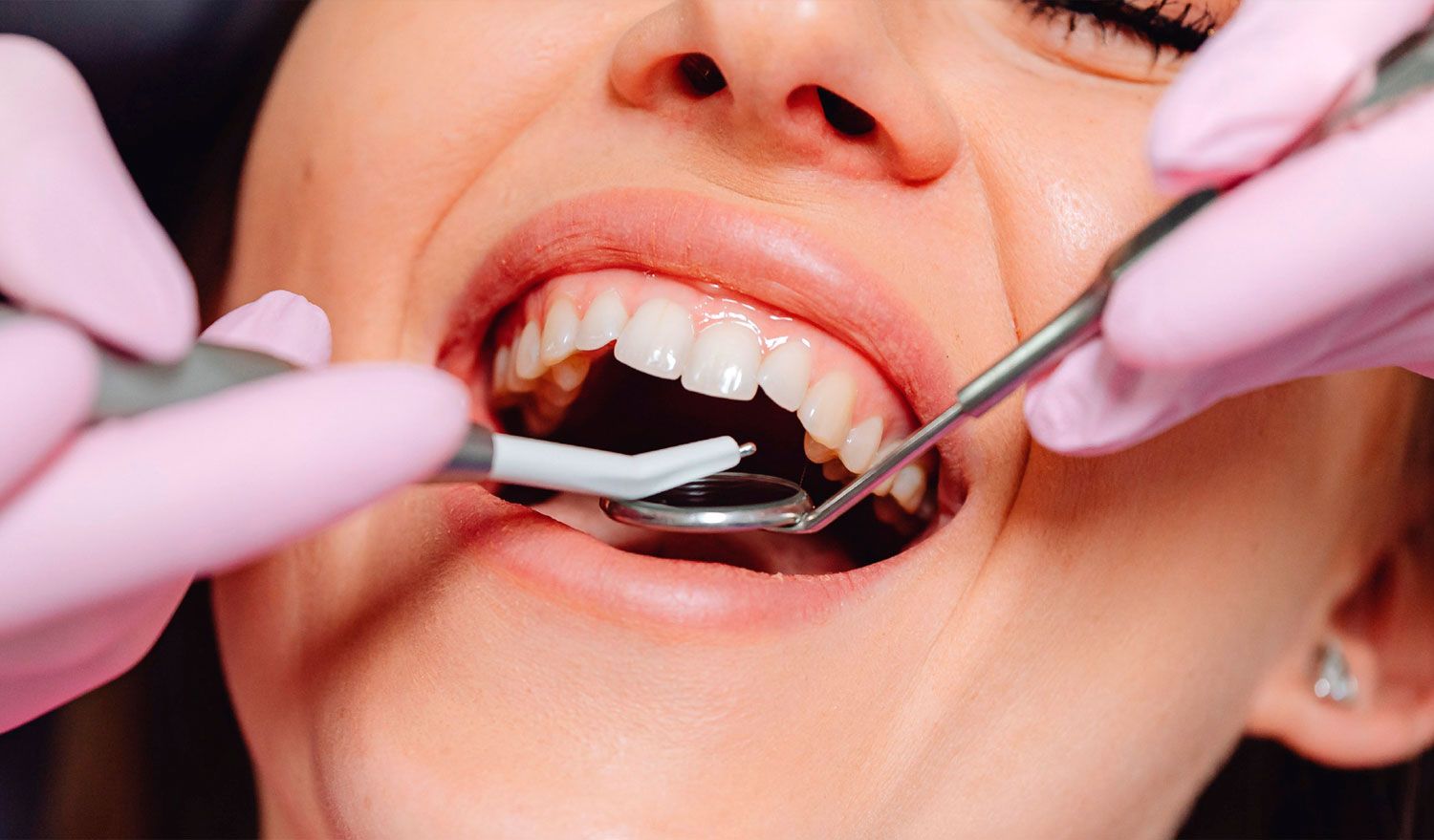Remove tartar and polish
If plaque remains on the tooth surface for a long time, it can calcify and harden. This is called tartar. Tartar forms primarily just below the gumline and behind and between your teeth. These are the areas often overlooked when brushing. Tartar cannot be removed by thorough brushing and must be professionally removed.
Tartar Removal
Once tartar has formed, it can be removed by a dental hygienist, preventive assistant, or dentist. Tartar removal can be done in two ways: with a hook (which scrapes away the tartar) or with a device that produces ultrasonic vibrations. The vibrations loosen the tartar.
Teeth Polishing
After the treatment, your teeth can be polished. Polishing is done with a brush combined with a polishing paste. This polishing paste is applied to your teeth, and then the teeth are polished with the brush.
Effects of the Treatments
Removing tartar addresses one of the causes of gingivitis. Maintaining good oral hygiene after the cleaning can help your gums recover. Polishing can remove unwanted deposits and restore their aesthetics.
Why Remove and Polish Tartar?
Tartar can cause long-term gum problems. Therefore, it is important to remove tartar. Preventing tartar is even better. Therefore, brush your teeth at least twice a day with fluoride toothpaste and, if advised, clean the spaces between your teeth as well.
Alternative Treatment
You cannot remove tartar yourself and must be professionally removed by a dentist, dental hygienist, or dental assistant.
Your dentist, dental hygienist, or dental assistant will advise you on preventative measures and which dental cleaning is most suitable for your personal situation.
Source: KNMT
Opening hours
-
Mon – Fri.:
08:00 - 12:00 uur
13:00 - 17:00 uur


